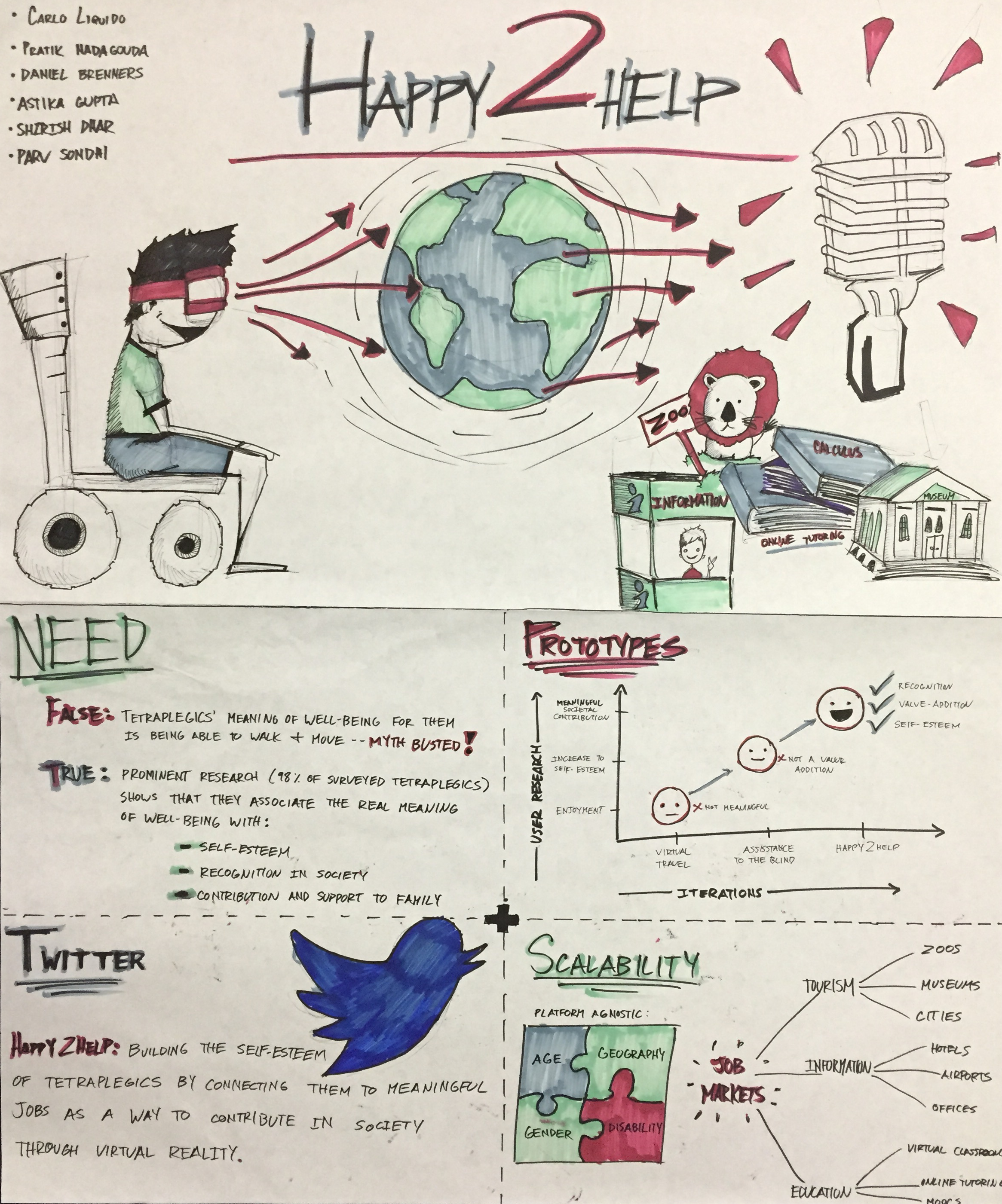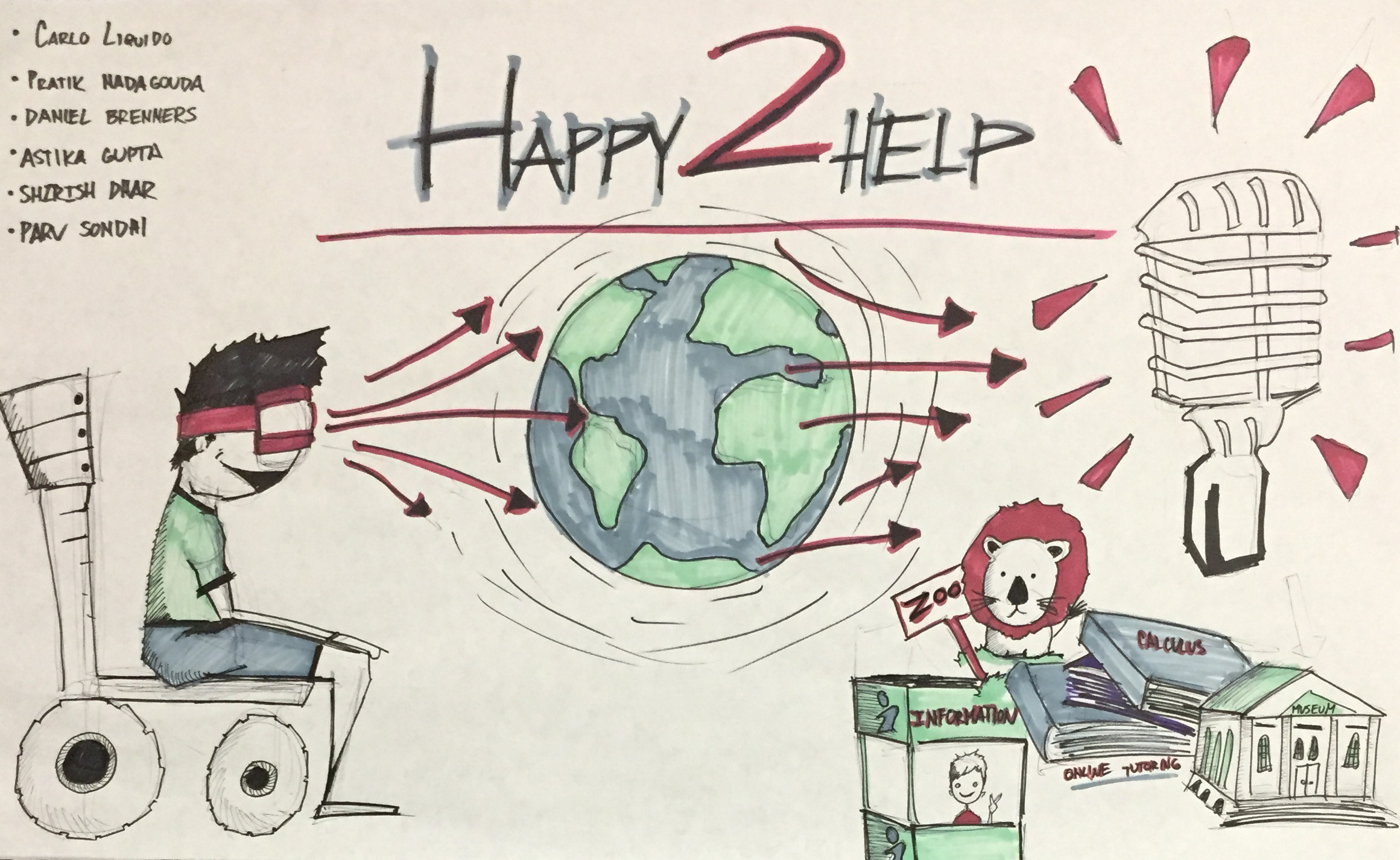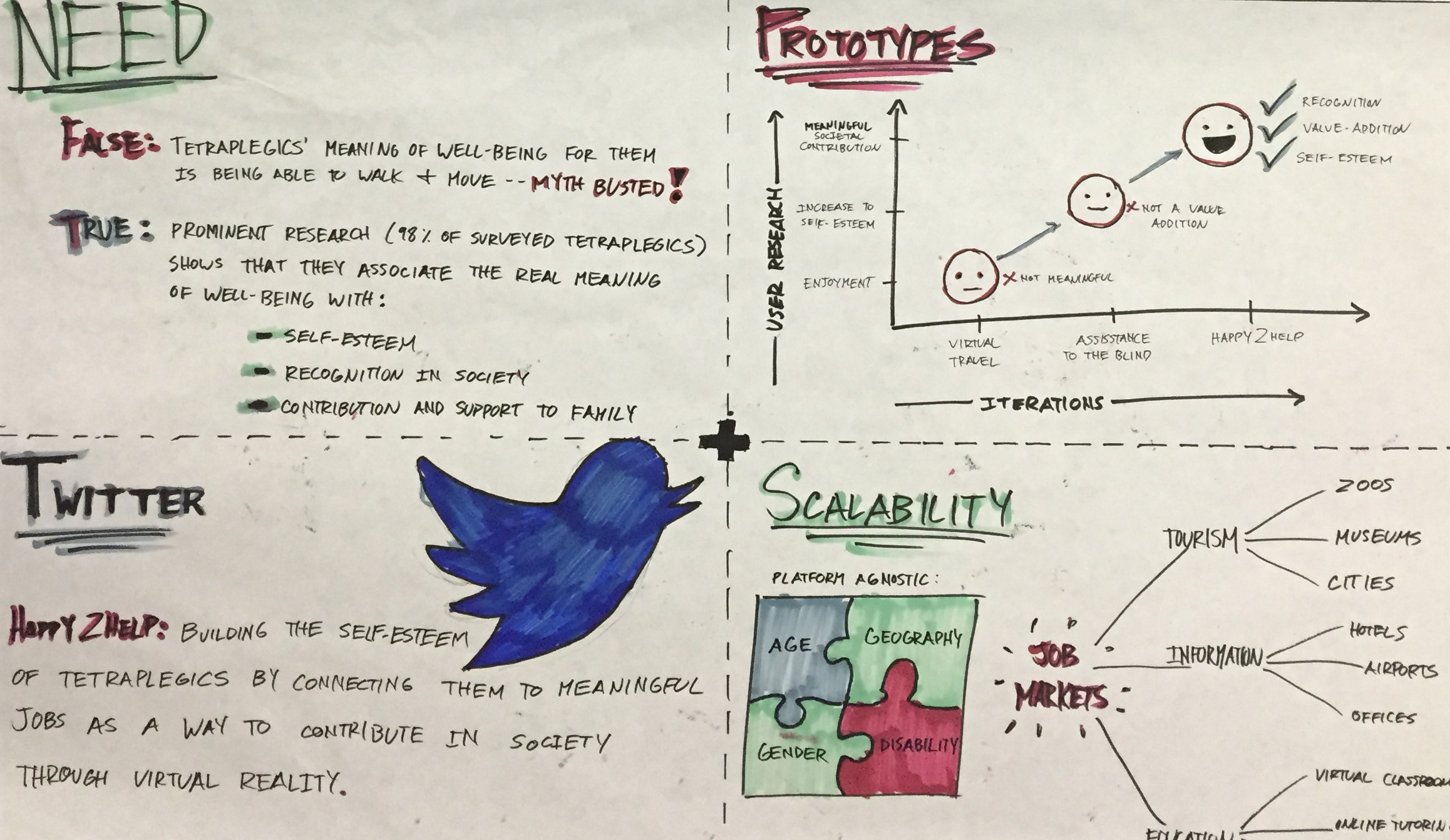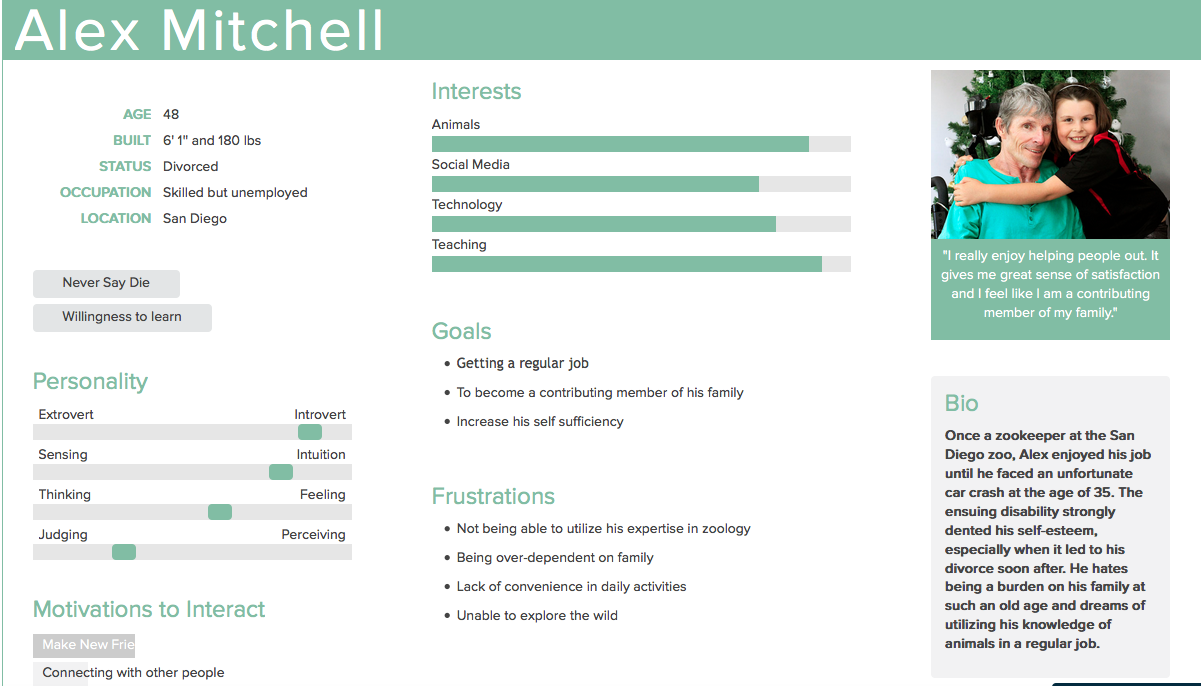Happy2Help:
Students’ Prize-Winning App Empowers Tetraplegics[User Research] [User Experience] [Javascript] [Human Computer Interaction] [Storyboarding]
 Click to view the UC Berkeley news article
Click to view the UC Berkeley news article
Lead efforts in creating the visual storyboard deliverable and helped conduct user experience research on tetraplegic people in society.
Happy2Help was formulated to transcend beyond the recreational motives of a tetraplegic individual, instead aiming to dig deep and locate their fundamental requirement - to gain a meaningful identity within their community. While virtually experiencing fun activities like scaling mountains would provide them with temporary satisfaction, providing them jobs that utilize their assets would provide them with permanent empowerment.
One of the biggest myths regarding the tetraplegic community is that the real meaning of well-being for them is being able to walk and move. Prominent research work[1] in the tetraplegic domain shows that 98% of most surveyed tetraplegics associate the real meaning of well-being with acquiring ‘self-esteem’ within their family and their community. Self-esteem, for all the surveyed tetraplegics, meant the following: Contribution and support to family Recognition in society Based on our user research, we developed a persona of Alex Mitchell. He is a 48 year old tetraplegic currently looking for ways to become independent and self sufficient, along with being able to a contributing member of his family.
We iterated through several use cases for the tetraplegics. We realized that rather than building something for their recreation, if we built a means for them to make a difference in society, it would help them to help themselves. Our primary thought process was to utilize the eyesight and voice of tetraplegics to guide blind people in their everyday tasks. However, we decided that this application should be a future extension of our product, given the amount of moving parts involved with this idea. Finally, we decided to provide the tetraplegics an opportunity to work in jobs that can fully utilize their assets of voice and eyesight, such as zoo guides, museum guides, online tutors through virtual reality.
We produced a short video with a virtual reality augmentation. In the video, a tourist, Ellie, at a zoo looks at the animals with the help of a tetraplegic tour guide who is sitting in the comfort of his home. The tourist and her virtual guide have a much more informal and easy-paced session between them, something which would be difficult to achieve in the case of a physical tour guide.
We look at the application being highly successful in providing multiple job opportunities to tetraplegic people and help them become a contributing member of society. We see this system easily being scaled with the help of existing technologies such as 3D cameras and existing VR technology. We can see organizations investing in this technology to become much more socially relevant and help in empowering employment opportunities for all. A future use case of the portal that we discussed above was allowing tetraplegic people to pair with blind people to help them out by providing them with guidance throughout certain activities and tasks that the blind people request for. The blind people are able to request for assistance in terms of voice guidance and extra pair of eyes. The tetraplegic people from their home and using their head mounted VR camera can help see what the 3D cameras attached to the blind people see. This would allow the tetraplegic to effectively help blind people in multiple tasks. We see a bright future for such technology and its use in helping tetraplegics overcome their disabilities and become more independent.
Group Members: Pratik Nadagouda, Parv Sondhi, Astika Gupta, Shirish Dhar, Daniel Brenners
home

